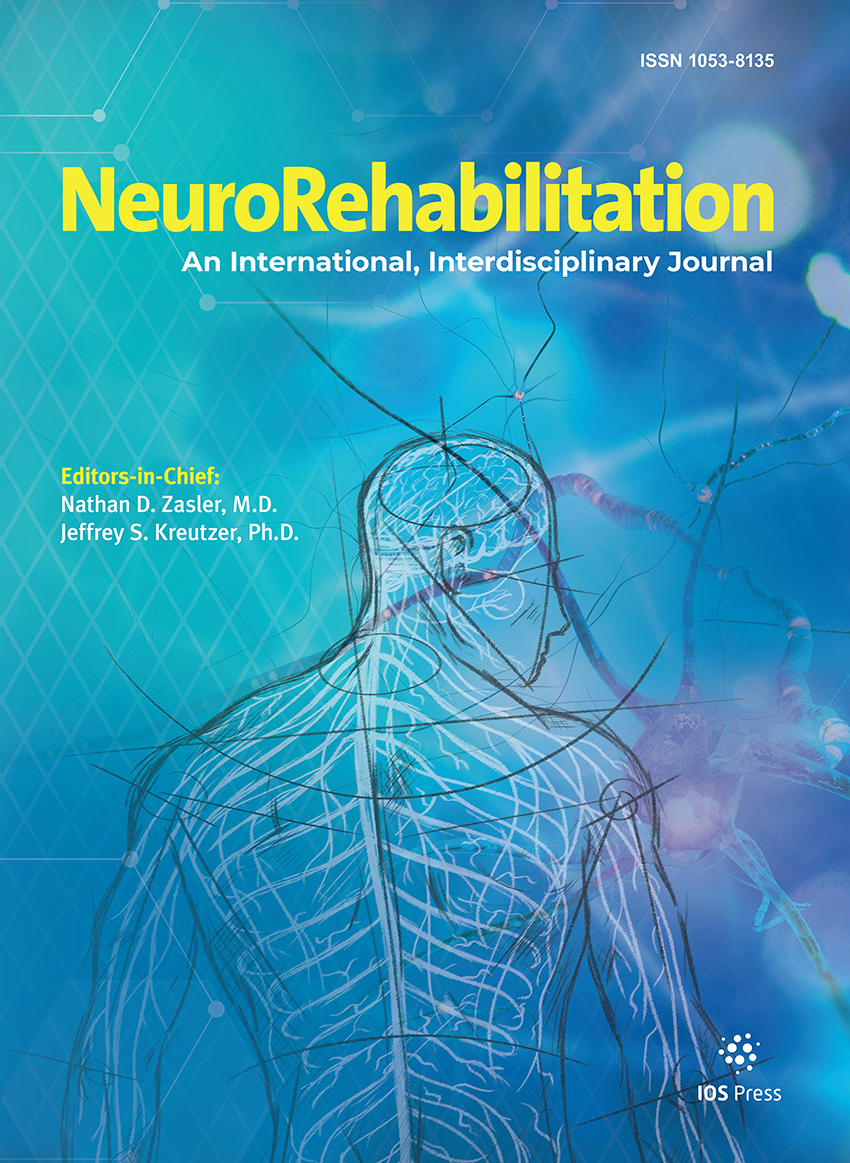Authors: Martelli, Michael F. | Nicholson, Keith | Zasler, Nathan D.
Article Type:
Research Article
Abstract:
Persistent cognitive, emotional and behavioral dysfunction following brain injury present formidable challenges in the area of neurorehabilitation. This paper reviews a model and practical methodology for community based neurorehabilitation based upon: 1. Evidence from the “automatic learning” and “errorless learning” literature for skills relearning after brain injury; 2. A widely applicable task analytic approach to designing relevant skills retraining protocols; 3. Analysis of organic, reactive, developmental, and characterological obstacles to strategy utilization and relearning, and generation of effective therapeutic interventions; and 4. Procedures for (a) promoting rehabilitative strategy use adapted to acute and chronic neurologic losses,
…(b) an individual’s inherent reinforcement preferences and coping style, (c) reliant on naturalistic reinforcers which highlight relationships to functional goals, utilize social networks, and (d) employ a simple and appealing cognitive attitudinal system and set of procedures. This Holistic Habit Retraining Model and methodology integrates core psychotherapeutic and learning principles as rehabilitation process ingredients necessary for optimal facilitation of skills retraining. It presents a model that generates practical, utilitarian strategies for retraining adaptive cognitive, emotional, behavioral and social skills, as well as strategies for overcoming common obstacles to utilizing methods that promote effective skills acquisition. Evidence from the “automatic learning” and “errorless learning” literature for skills relearning after brain injury; A widely applicable task analytic approach to designing relevant skills retraining protocols; Analysis of organic, reactive, developmental, and characterological obstacles to strategy utilization and relearning, and generation of effective therapeutic interventions; and Procedures for (a) promoting rehabilitative strategy use adapted to acute and chronic neurologic losses, (b) an individual’s inherent reinforcement preferences and coping style, (c) reliant on naturalistic reinforcers which highlight relationships to functional goals, utilize social networks, and (d) employ a simple and appealing cognitive attitudinal system and set of procedures.
Show more
Keywords: Neurorehabilitation, holistic rehabilitation, cognitive rehabilitation, traumatic brain injury, habit retraining
DOI: 10.3233/NRE-2008-23201
Citation: NeuroRehabilitation,
vol. 23, no. 2, pp. 115-126, 2008
Price: EUR 27.50





